.webp)
The Ultimate Guide to Solar Heater for Shed Efficient Heating
Table of Contents
A shed serves various purposes, from storage and workshops to ADU offices and creative studios. However, maintaining a comfortable temperature, especially during colder months, can be challenging. A solar heater for shed offers an energy-efficient and cost-effective solution to keep your space warm without relying on electricity or fossil fuels.
For those considering a broader solar setup, understanding solar power for a shed can help determine the right system size and energy needs. If you’re exploring sustainable living solutions beyond a shed, a solar panel setup for a tiny house offers insights into efficiency and long-term savings.
Prefabricated structures with built-in solar capabilities are also gaining popularity. A solar prefab home combines energy efficiency with modern design, making it an attractive alternative to traditional builds. If you're in California, it's also essential to understand ADU solar requirements in California for compliance when integrating solar solutions into an accessory dwelling unit or backyard office.
This article explores how solar heating works, different heater types, installation steps, maintenance tips, and alternative methods to help create a sustainably heated and energy-efficient shed.
1. How Solar Heating Works for Sheds
A solar heater for shed harnesses the sun’s energy to generate and retain heat. There are two main types:
Passive Solar Heating:
- Utilizes thermal mass materials (e.g., brick, concrete, or dark-colored surfaces) to absorb and store heat during the day, releasing it when temperatures drop.
- Works best in well-insulated sheds with south-facing windows that maximize solar exposure.
- Enhancements such as heat-retaining curtains, insulated walls, and proper ventilation can improve efficiency.
Active Solar Heating:
- Involves solar collectors or photovoltaic panels that absorb solar energy and convert it into heat.
- Heat is distributed using fans, vents, or liquid-based systems (solar water heating).
- More efficient and controlled than passive solar heating, making it ideal for sheds with higher heating demands.
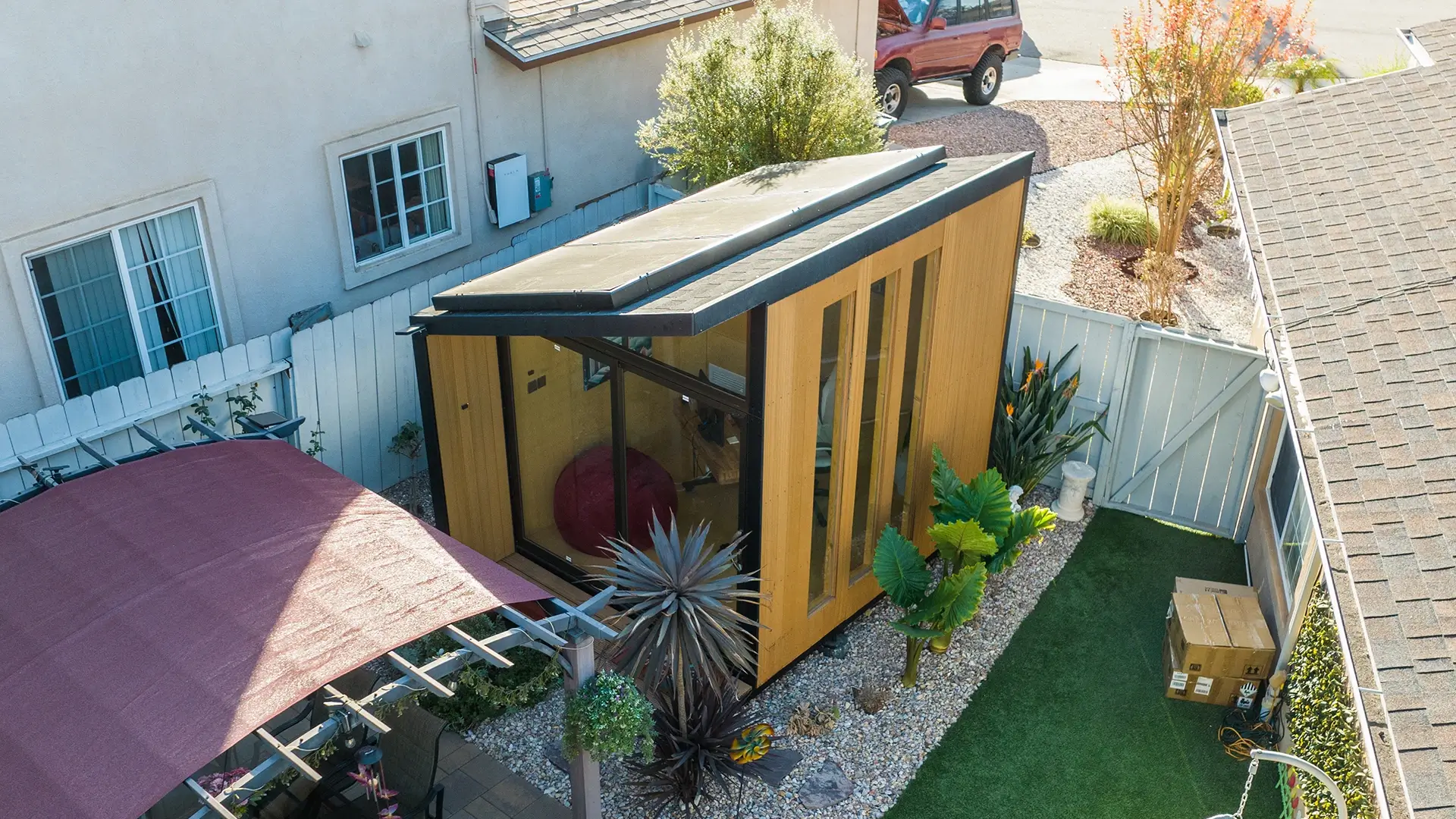
2. Why Solar Heaters Are Perfect for Sheds
A solar heater for shed provides numerous advantages over traditional heating solutions, making it a smart investment for those looking to heat their space efficiently and sustainably. Below, we break down each benefit in more detail:
2.1. Reduced Energy Costs
One of the biggest advantages of a solar heater for shed is its ability to lower heating expenses. Since solar energy is free, you eliminate ongoing electricity or fuel costs associated with traditional heaters. While there is an initial setup cost, the long-term savings make solar heating a cost-effective solution. Over time, the savings on electricity, propane, or wood can easily offset the upfront investment.
Additionally, some regions offer solar energy tax incentives or rebates for installing renewable energy systems, further reducing costs.
2.2. Eco-Friendly Heating
A solar heater for shed uses renewable energy instead of fossil fuels, making it an environmentally responsible choice. By reducing reliance on electricity (which often comes from coal or natural gas) or propane, solar heating lowers carbon emissions and contributes to a greener planet.
Unlike gas or wood-burning heaters, which release harmful pollutants like carbon monoxide, solar heaters produce no emissions, ensuring clean indoor air quality. This makes them particularly beneficial for workshops, home office sheds, and storage sheds where air circulation may be limited.
2.3. Off-Grid Heating
For sheds located in remote areas or properties without direct electrical connections, a solar heater for shed provides a self-sustaining heating solution. Many sheds serve as workshops, storage spaces, or backyard offices, and installing electrical lines can be both costly and impractical.
A solar heater eliminates the need for grid-dependent heating, ensuring warmth even in off-grid locations such as farms, homesteads, or cabins. This makes it an ideal solution for those looking to create a fully independent workspace. If you're planning to convert a shed into a functional office, exploring office shed plans can provide a structured approach to designing an efficient space. Additionally, prefab offices offer ready-to-assemble solutions that integrate well with solar heating, making them perfect for those seeking a warm, off-grid workspace year-round.
2.4. Low Maintenance
Compared to electric or gas heaters, a solar heater for shed requires very little maintenance. Traditional heaters often have moving parts, combustion elements, or filters that need frequent cleaning and replacements. In contrast, solar heaters have few mechanical components, reducing the need for repairs.
The main maintenance tasks for a solar heater include:
- Cleaning the solar panels or collectors every few months to remove dust and debris.
- Checking insulation and vents to ensure heat is efficiently distributed.
- Inspecting wiring or connections in an active solar heating system.
Since solar heating systems have long lifespans, many last 15–25 years with minimal upkeep, making them a hassle-free investment.
2.5. Safe and Reliable
A solar heater for shed eliminates fire hazards, carbon monoxide risks, and overheating dangers associated with traditional heating systems. Here’s why they’re one of the safest heating options:
- No exposed electrical wiring – Reduces the risk of short circuits or electrical fires.
- No gas combustion or open flames – Unlike propane or wood heaters, solar heating does not produce carbon monoxide, preventing toxic gas buildup inside a shed.
- No risk of overheating – Passive solar heating works naturally, and active solar heaters shut off automatically when optimal temperatures are reached.
Since many sheds are small enclosed spaces, traditional heaters can pose serious safety risks if not monitored properly. A solar heater eliminates these concerns, making it a worry-free and efficient heating solution.
For those considering a shed-to-office transformation, incorporating solar heating into a well-designed workspace can enhance both comfort and productivity. If you're looking for inspiration, garage office pods offer creative ways to repurpose small spaces into functional work environments that balance efficiency, sustainability, and safety.
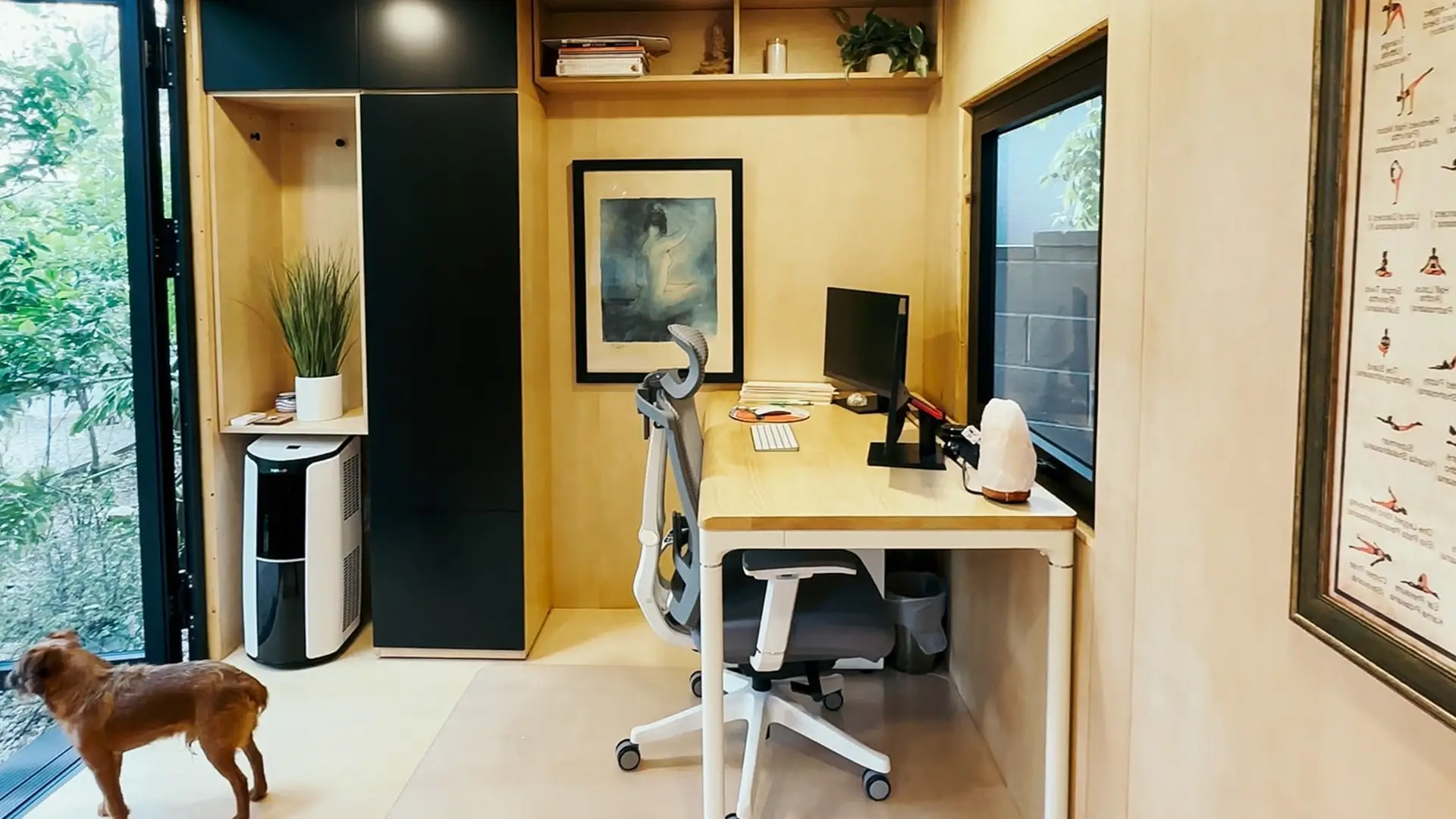
3. Setting Up a Solar Heater for Your Shed
Proper installation ensures maximum efficiency and long-term performance for a solar heater for a shed. Optimizing placement, improving insulation, ensuring proper heat distribution, and protecting electrical components all contribute to a well-functioning system.
3.1. Optimizing Solar Collector Placement
Placing solar collectors in the right position is crucial for capturing the most sunlight. The south-facing side of the shed is the best location, ensuring consistent sun exposure throughout the day. It is important to keep the area free from shading caused by trees, fences, or buildings, as even partial obstruction can reduce efficiency. Adjusting the panel tilt based on seasonal sunlight angles further enhances performance. A steeper angle works better in winter when the sun is lower in the sky, while a lower tilt optimizes summer heat absorption.
3.2. Ensuring Proper Insulation and Heat Retention
Without proper insulation, even the most efficient solar heater will struggle to keep a shed warm. Sealing gaps around doors and windows with weatherproof materials prevents heat from escaping and keeps cold air from entering. Insulating walls, floors, and ceilings with foam boards, reflective barriers, or fiberglass improves heat retention and minimizes temperature fluctuations. Using thermal mass materials such as bricks, concrete, or water barrels allows heat to be absorbed during the day and gradually released at night, helping maintain a stable indoor temperature. Covering windows with thermal curtains adds an extra layer of insulation while still allowing passive solar gain during daylight hours.
3.3. Improving Heat Distribution
Even heating is essential for maintaining comfort inside the shed. In active solar heating systems, a small solar-powered fan helps distribute warm air evenly throughout the space. Passive heating systems rely on natural airflow, which can be enhanced by strategically placing adjustable vents to direct warm air where it is needed most. Floor or ceiling vents help prevent temperature layering, ensuring warm air does not accumulate near the ceiling while the lower parts remain cold. If using a solar water heating system, radiant floor heating pipes offer consistent warmth throughout the space.
3.4. Protecting Wiring and System Components
For active solar heating systems with electrical components, proper protection ensures long-term reliability. Weatherproof enclosures safeguard solar panel inverters, charge controllers, and battery storage from moisture and extreme temperatures. Running wires through conduit tubing prevents exposure to environmental elements, pests, or accidental damage. Batteries should be stored indoors or inside an insulated, weatherproof box to maintain performance during colder months. Regular inspections of electrical connections help detect any issues early and ensure system functionality.
3.5. Monitoring and Optimizing System Performance
Keeping track of system performance helps maximize heating efficiency. A solar charge controller or energy meter provides real-time monitoring, allowing for adjustments if needed. A backup heat source, such as a small propane or electric heater, can be useful during extended cloudy periods when solar heat generation is lower. For those requiring nighttime heating, a battery storage system allows excess solar energy collected during the day to be used after sunset.
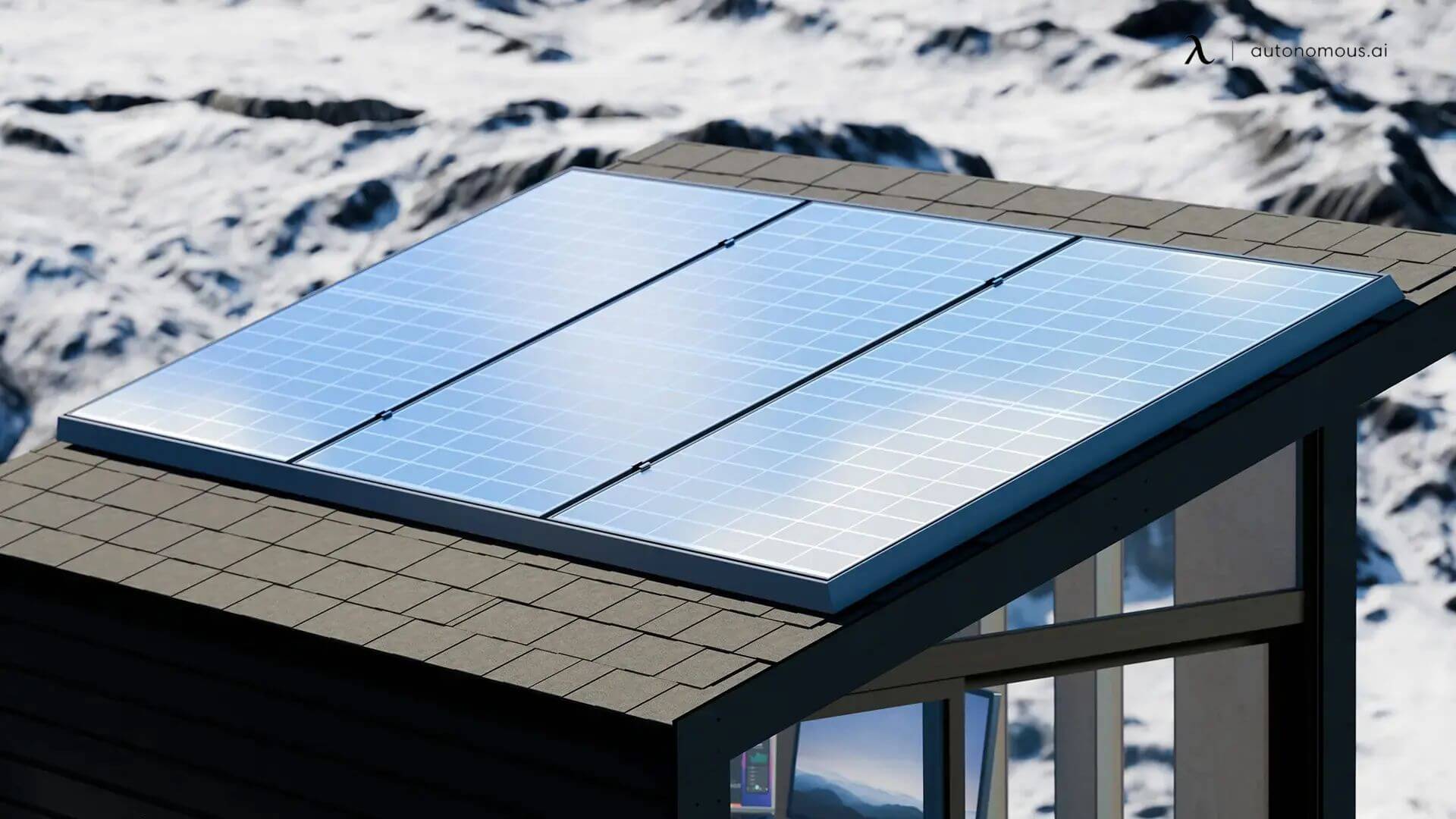
4. DIY Solar Heater for Shed
A DIY solar heater for a shed is a cost-effective and energy-efficient way to keep your space warm. By harnessing the sun’s natural energy, you can create a low-maintenance heating solution using simple materials. Follow these steps to build your own solar air heater.
Step 1: Gather Materials
To build a basic solar air heater, you will need:
- A wooden or metal frame (plywood or sheet metal)
- Black-painted aluminum cans or a black metal sheet
- Clear acrylic or glass panel
- Insulated backing (foam board or reflective insulation)
- Air intake and exhaust vents
- A small solar-powered fan (optional but improves heat circulation)
- Screws, hinges, and weatherproof sealant
Step 2: Build the Heater Box
Construct a rectangular box using plywood or sheet metal. This serves as the heat collector. Ensure the box is deep enough to allow good air circulation inside. Attach an insulated backing to prevent heat loss and improve efficiency.
Step 3: Install Heat Absorbers
If using aluminum cans, cut holes in them and stack them vertically inside the box. Paint them black to absorb more heat. If using a metal sheet, paint it black and secure it inside the box. The dark surface absorbs solar energy and transfers heat to the air.
Step 4: Attach the Clear Cover
Place a clear acrylic or glass panel over the front of the box. This traps heat inside, creating a greenhouse effect. Secure it with screws and apply weatherproof sealant to prevent air leaks.
Step 5: Add Air Vents and Fan
Cut an air intake hole at the bottom and an exhaust vent at the top of the heater. This allows air to flow through the system. For better heat distribution, install a small solar-powered fan at the exhaust vent to push warm air into the shed.
Step 6: Mount the Heater on Your Shed
Install the solar heater on a south-facing wall to maximize sunlight exposure. Secure it firmly and ensure the air vents align with openings in the shed’s wall.
Step 7: Improve Heat Retention
Seal any gaps in doors and windows to prevent heat loss. Adding thermal mass materials like bricks or water containers inside the shed helps retain warmth longer.
Step 8: Test and Optimize
On a sunny day, monitor the heater’s performance. Adjust the vent openings if needed to improve airflow. A well-built DIY solar heater can significantly increase shed temperatures, providing free and eco-friendly warmth throughout the colder months.
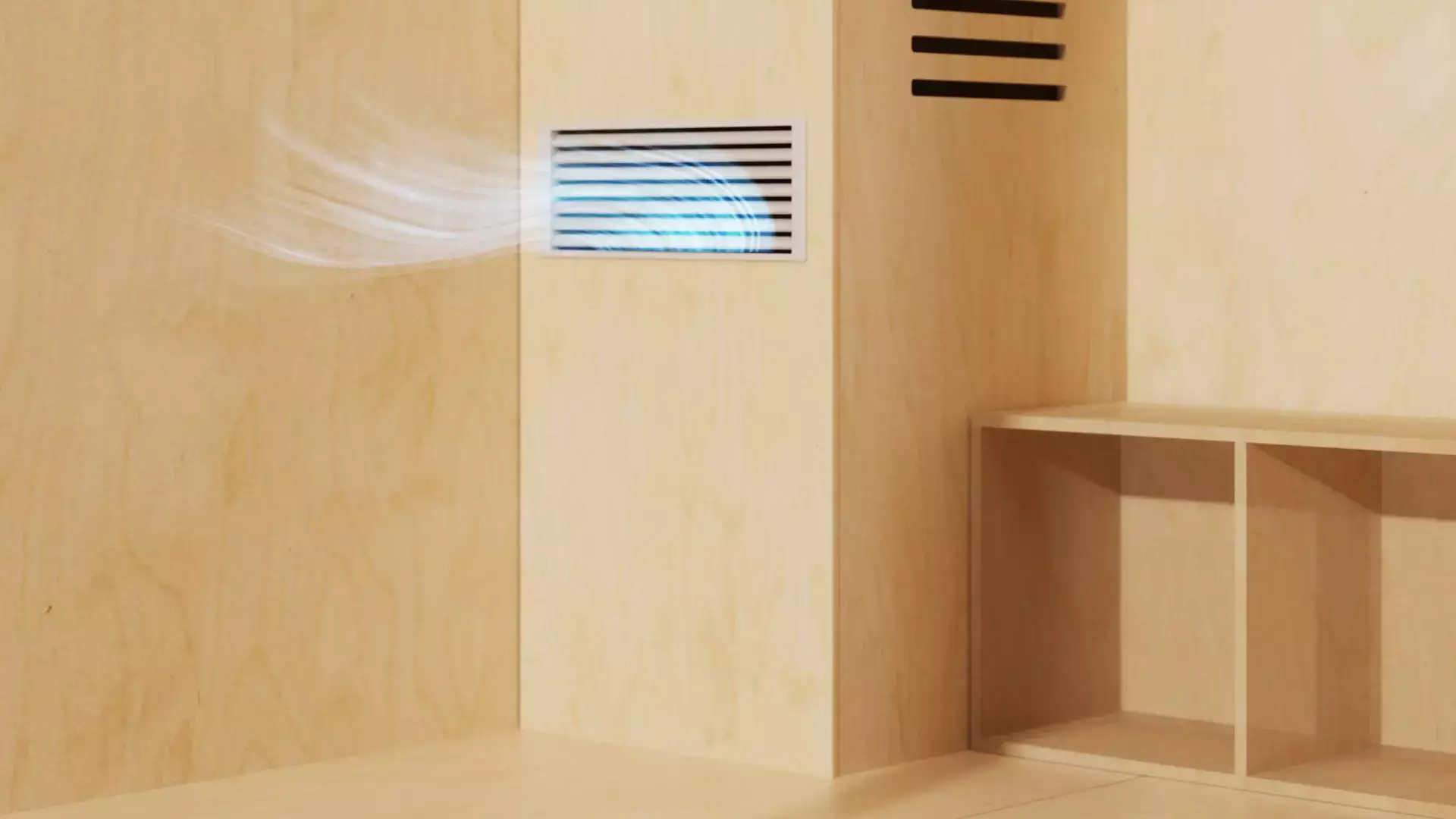
5. A Fully Integrated Solar Workspace Solution
For those looking for a fully integrated solar-powered workspace, the Autonomous WorkPod Solar and WorkPod Versatile Solar offer an advanced, all-in-one alternative to traditional solar heating solutions. These prefabricated backyard offices are designed for energy efficiency, providing built-in solar panels, insulation, and a sustainable power system to keep your workspace warm and functional throughout the year.
The Autonomous WorkPod Solar is designed for professionals who need an off-grid, eco-friendly office space. With a 102-square-foot floor area, it features three high-efficiency solar panels capable of generating 430W of power per panel, a 3000W inverter, and a 10.2 kWh battery system to store excess solar energy. The insulated walls, weatherproof construction, and integrated ventilation system ensure that the WorkPod remains comfortable regardless of external temperatures. Its furnished option includes an ergonomic workstation setup, making it an ideal choice for those who need a ready-to-use, energy-efficient workspace.
For those seeking more adaptability, the Autonomous WorkPod Versatile Solar offers customizable layouts with enhanced solar capabilities. It features four solar panels generating a total of 1840W, a 3000W inverter, and a 10.2 kWh battery system that allows up to eight hours of solar-powered operation, even without direct sunlight. With thicker insulation, high-quality tempered glass windows, and a ventilated design, this model ensures year-round comfort and warmth. The furniture options allow users to transform the space into an office, studio, or guest pod while maintaining a fully solar-powered heating and energy solution.
Prefabricated solar-powered workspaces like these are also great for other creative and personal uses. A backyard music studio offers a quiet, soundproof space for musicians, while a backyard gym shed provides an energy-efficient fitness retreat. Those looking for a personal escape might consider a she shed or a backyard art studio for uninterrupted creative work. A gaming shed can also be a dedicated entertainment space, benefiting from an off-grid power system.
6. Alternative Ways to Heat a Shed Without Electricity
If a solar heater for a shed isn’t an option, several alternative methods can provide warmth without relying on electricity. The table below outlines effective solutions and how they work.
| Heating Method | How It Works | Pros | Cons |
|---|---|---|---|
| Thermal Mass Storage | Materials like concrete, bricks, or water barrels absorb heat during the day and release it slowly at night. | Passive, requires no fuel or electricity, low-maintenance. | Works best in well-insulated sheds, slow heat release. |
| Compost Heating | Organic materials decompose and generate heat, which can be redirected into the shed using pipes or vents. | Sustainable, free heat source, works well in winter. | Requires regular compost maintenance, needs space. |
| Windbreaks and Insulation | Reducing drafts with curtains, rugs, or foam insulation helps trap warmth and prevent heat loss. | Affordable, easy to implement, improves efficiency of any heating system. | Doesn’t generate heat on its own, only retains warmth. |
| Wood-Burning Heaters | Firewood burns in a stove or fireplace, providing consistent radiant heat. | High heat output, works in all conditions. | Requires ventilation, regular fuel supply, and fire safety precautions. |
| Propane Heaters | Burns propane to produce direct heat, useful for quick warming in small spaces. | Portable, high heat efficiency, available in different sizes. | Produces emissions, needs proper ventilation, ongoing fuel costs. |
Each of these alternatives can be used alone or combined with proper insulation to maintain a warm and comfortable shed throughout the colder months.
For those considering adding electricity to their shed, there are several ways to integrate power for additional heating options. If you're looking for a step-by-step guide, running electricity to a shed covers installation essentials. If you're designing a dedicated space, exploring she sheds with electricity or office sheds with electricity can help in selecting the best power setup for your needs. Additionally, understanding shed electricity regulations ensures a safe and compliant installation.
Whether relying on alternative heating methods or installing electricity for powered heating solutions, the right approach ensures a warm, functional shed year-round.
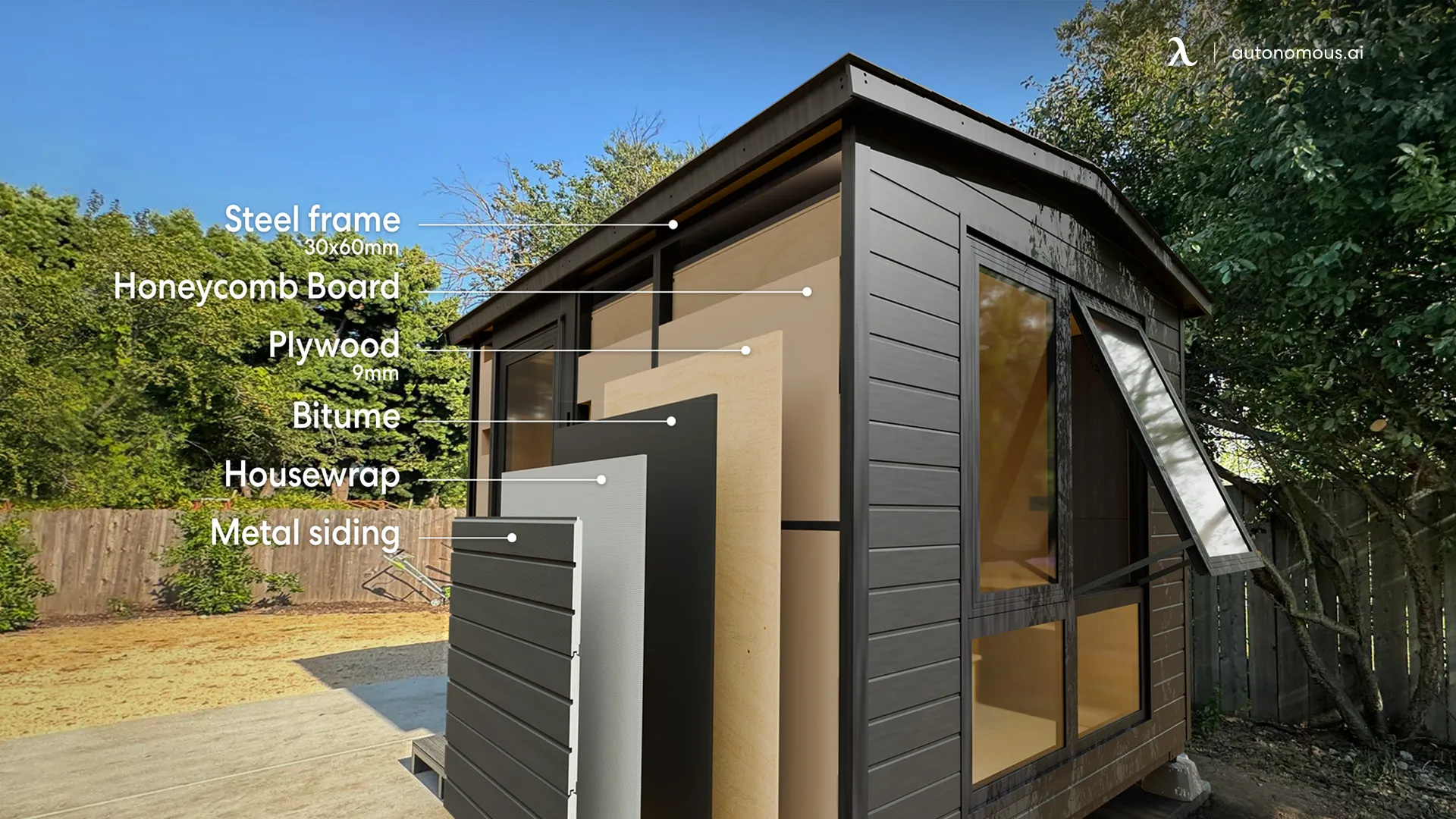
7. FAQs
Can I heat my shed with solar power?
Yes, you can heat a shed with solar power using either passive solar heating (absorbing sunlight through thermal mass materials) or active solar heating (using solar panels or collectors to generate heat). Proper insulation and ventilation enhance effectiveness.
How to heat a shed with solar?
To heat a shed with solar energy, follow these steps:
- Choose a solar heating method – passive (windows, thermal mass) or active (solar air or water heater).
- Install solar panels or collectors in a south-facing position for maximum sunlight.
- Ensure proper insulation with foam boards, reflective barriers, and sealed gaps.
- Use a heat distribution system like a solar-powered fan or vents to circulate warm air.
- Monitor and adjust settings for seasonal efficiency.
Can you heat a shed with solar panels?
Yes, solar panels can be used to generate electricity to power electric heaters, infrared panels, or solar-powered fans for heating. However, a direct solar air or solar water heating system is usually more efficient than converting solar energy into electricity for heating purposes.
What is a solar window heater for a shed?
A solar window heater is a passive heating system that uses a window-mounted solar collector to capture sunlight, convert it into heat, and circulate warm air into the shed. It typically consists of black metal or aluminum panels behind a clear glass or acrylic cover, creating a greenhouse effect.
How effective is a solar window heater for a shed?
A solar window heater works best in small, well-insulated sheds with south-facing windows that receive direct sunlight. While it provides supplemental heating, it may not be sufficient as the sole heat source in extreme cold.
How many solar panels do I need to heat my shed?
The number of solar panels depends on the heater's power consumption and available sunlight. A 1,500W electric heater typically requires 4–6 solar panels (400W each) and a battery storage system to run consistently, especially at night.
Can a solar heater provide enough warmth in winter?
Yes, with proper insulation and a well-positioned solar collector, solar heating can be effective even in cold weather.
How much does a solar heater for shed cost?
DIY systems can cost as little as $50, while commercial solar heating kits range from $200 to $1,000+.
What’s the best insulation to use with a solar heater?
Use foam board insulation, reflective barriers, and weather stripping to retain heat efficiently.
Do I need a battery to store solar heat for nighttime use?
Only for active solar heating systems that require power for fans or water pumps. Passive systems do not need a battery.
Conclusion
A solar heater for shed is a sustainable, cost-effective, and low-maintenance way to maintain warmth year-round. Whether you choose a DIY project or a pre-made solar heating kit, investing in insulation and proper installation will enhance efficiency. By considering your climate, shed size, and heating needs, you can create a comfortable, eco-friendly space while reducing energy costs.
Stay connected with us!
Subscribe to our weekly updates to stay in the loop about our latest innovations and community news!
Interested in a Link Placement?
Spread the word
.svg)
.svg)

.webp)

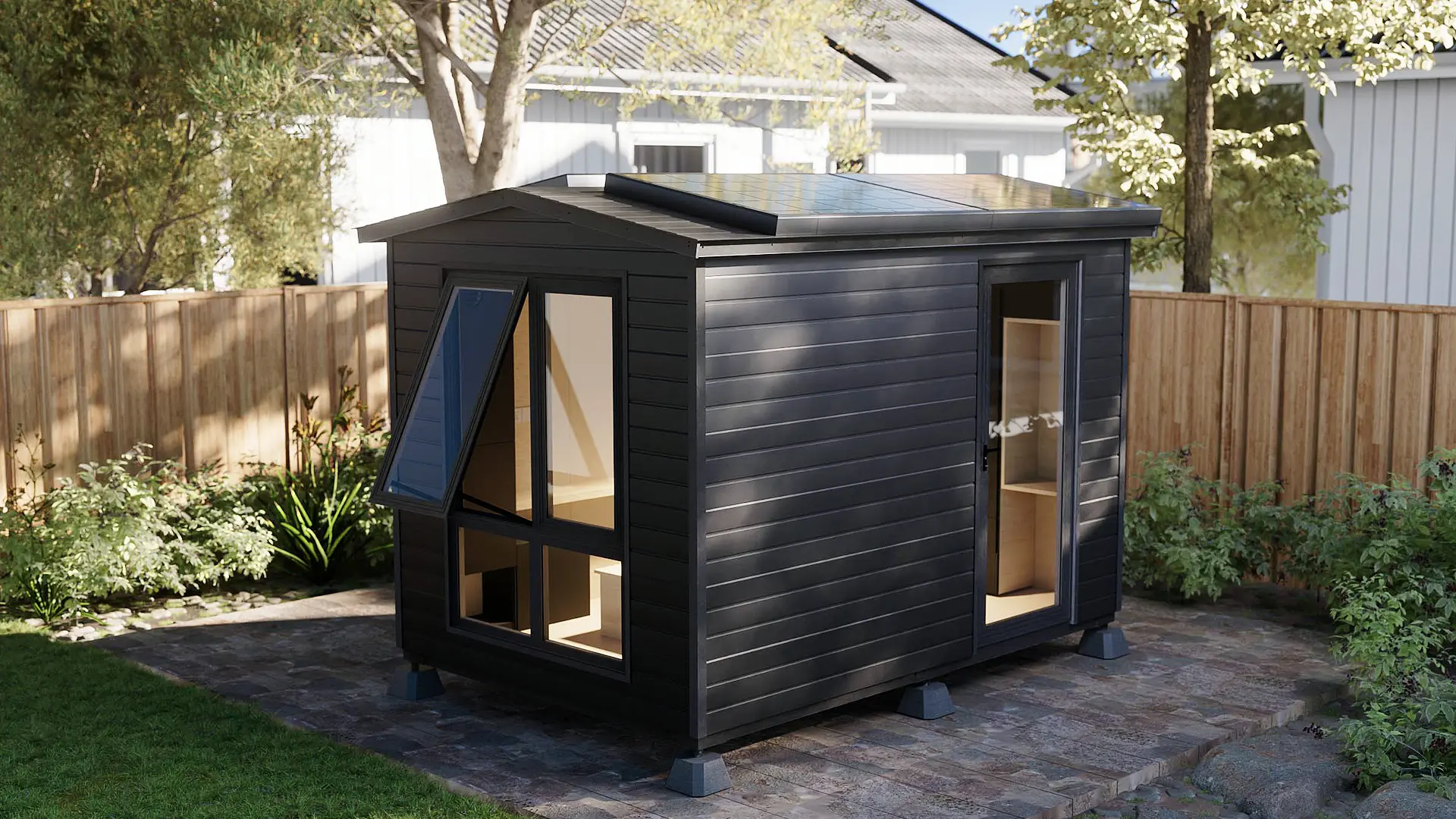


/https://storage.googleapis.com/s3-autonomous-upgrade-3/production/ecm/230914/bulk-order-sep-2023-720x1200-CTA-min.jpg)
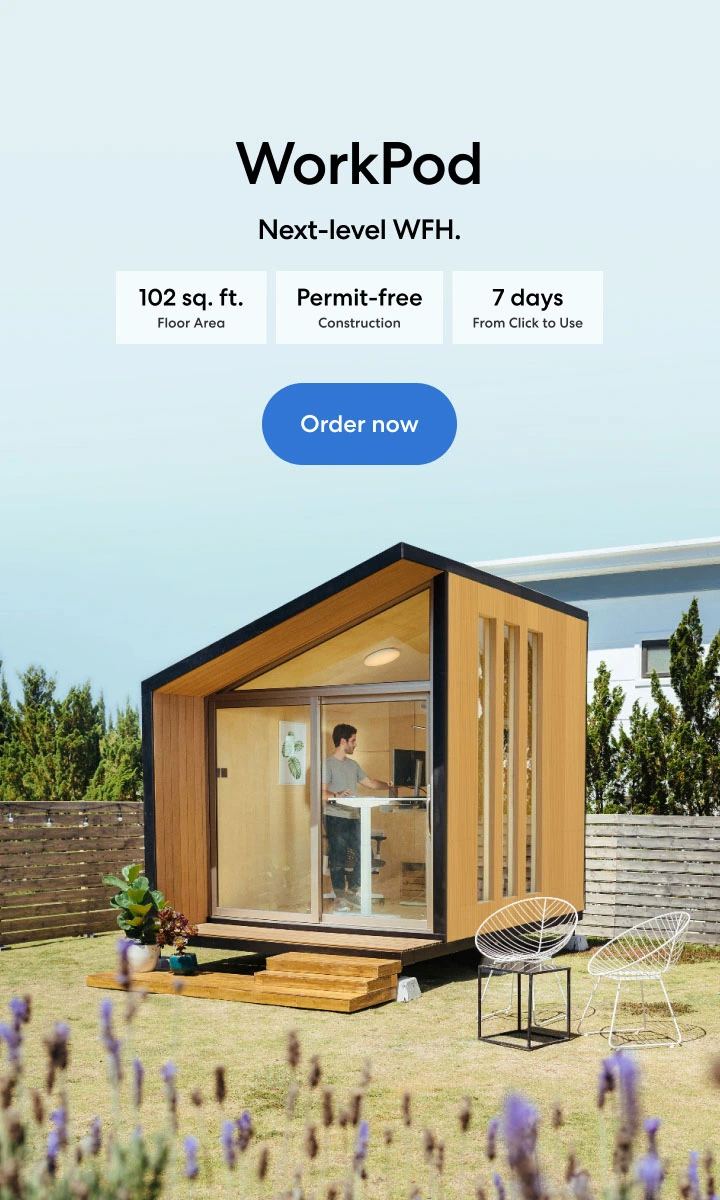
/https://storage.googleapis.com/s3-autonomous-upgrade-3/production/ecm/230824/image_78sctd8d_1692158325567_raw-80639991-bedf-4e11-a77c-1c8e0a351b40.jpg)